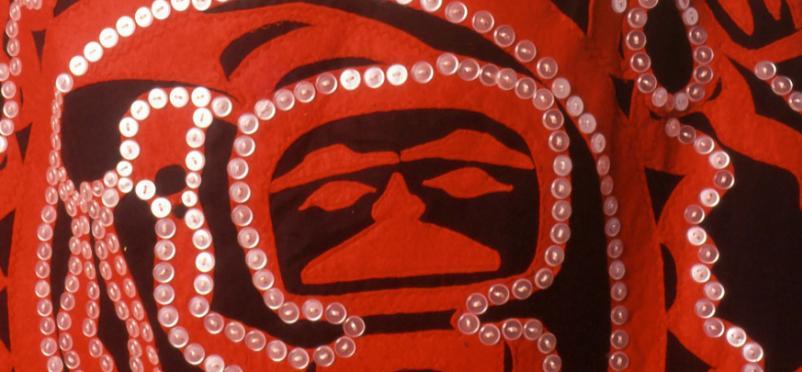Txeemsim (Superbeing)

A host of supernatural beings involved themselves in Nisga’a lives. Like Txeemsim, naxnok (spirits) possessed the power of transformation. Naxnok could appear as plants, animals, humans, or monsters. A person who encountered one might gain good luck. Many adaawak (traditional histories) tell how members of an entire wilp (house) acquired special powers when a fellow member met a naxnok. Other naxnok brought nothing but misfortune. An uncontrolled naxnok could cause serious problems. With proper training, Nisga’a who were strong and pure could control a naxnok. Once under control, the power of the naxnok could be used to help keep peace and harmony, or to make an enemy sick. Through the use of masks, costumes, song, dance, mimicry, and theatrical props, Nisga’a performers would transform their appearance to represent naxnok at ceremonial gatherings. Audiences were challenged to identify which spirits were being portrayed. These masks were originally used on such occasions.
The ancestors tell of a Great Flood that covered the Earth. To prevent being swept away, Nisga’a saved themselves in rafts and canoes, tying their vessels to the four highest peaks in Nisga’a territory, including Sganisim Xlaawit (Vetter Peak, 2058 metres). These peaks are known as the Saviour Mountains. Kind, generous, and humourous, Txeemsim is also a trickster. An approachable demi-god, he is full of human failings — even as he demonstrates how these failings can be conquered. To ensure his hard-won wisdom did not go to waste, Txeemsim wandered up and down the river, teaching the people he met. This was how our oral history began. An ancient and sophisticated code of laws, customs, and conduct, Ayuukhl Nisga’a is the living record of our nation and our conception of the world. It is Nisga’a history as told by our elders: the creation of the world; the Great Flood; the volcano’s eruption; the founding of the great families and their crests; the mythical feasts of warriors and spirits; the role of simgigat (chiefs), commoners, and slaves.
The deeds and misdeeds of Txeemsim show that every being in the universe has a rightful and meaningful part to play — and that we need one another. This is the foundation of Ayuukhl Nisga’a. In human society, a person’s rightful role is symbolized by regalia worn on special occasions, by the possessions a family kept, and by the wealth given away.
